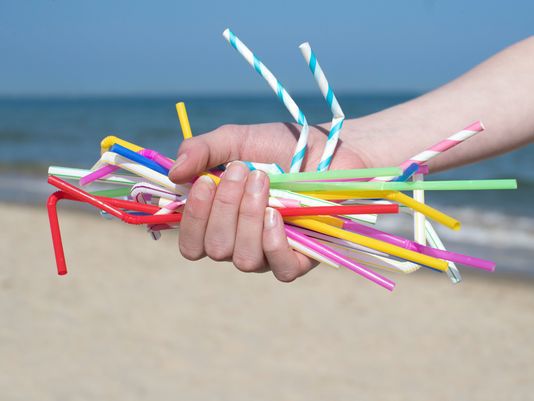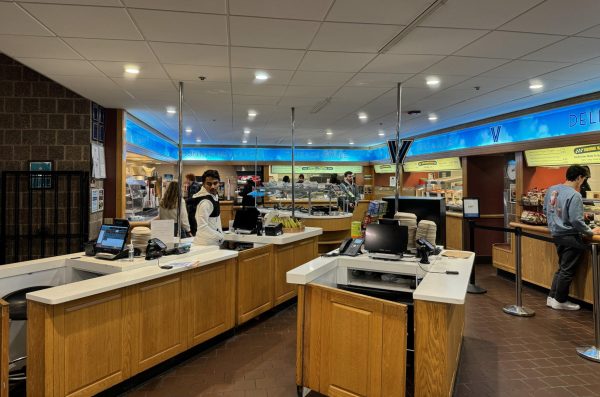Why Plastic Straw Bans Can Suck It

Why Plastic Straw Bans Can Suck It
April 9, 2019
Last year, a heartbreaking video of a sea turtle with a straw wedged up its nose went viral on the internet as mainstream media promoted it alongside an alarming statistic: “Americans use about 500 million plastic straws each day.” A nationwide movement ensued, as people across social media networks, corporations such as Starbucks, cities such as Seattle and even states started considering plastic straw bans. The right combination of emotion and promotion started an environmental wildfire. However, while this may have seemed like a step in the right direction for nature. In reality, there are deep-seated problems with banning plastic straws.
While this movement was well-intentioned, some of the information reported was entirely wrong. The widely-reported 500 million straw statistic actually comes from a telephone poll conducted by a nine-year-old boy in 2011. Though many have cited this fact, none can confirm the basis of its validity. Market research firms have encountered difficulty in finding a more accurate figure, but none have come close to that colossal one chosen by the media.
However, it seems that even the largest estimates would prove nearly inconsequential in relation to greater plastic pollution. Studies of United States coastlines have estimated that all straws on land would only amount to about 0.3 percent of the 8 million metric tons of plastics that enter the ocean in a year. Furthermore, straws already in the ocean are only about 0.0002 percent of the total weight of ocean plastic. The elimination of straws would be a near imperceptible mark on overall plastic pollution in the ocean. Even if this social movement succeeds, the path to further, more meaningful environmental work will be lengthy.
The benefits of a straw ban would be negligible, but the disadvantages would be much more harmful. Plastic straws are essential to the lives of the disabled in the United States. Many need straws due to inability to lift cups to their mouthscessible public places is a serious and immediate risk.
Furthermore, the alternatives that activists provide are incompetent in many ways. Of all straws, plastic ones are the sole type that are not a choking hazard, not an injury risk inexpensive, and safe in high temperatures. No other type of straw has been found to cover each of these categories. Any ban would negatively affect a significant portion of disabled Americans more than legislation would benefit the ocean. Taking away plastic straws places an immense burden on many Americans, leaving them with no solution. We need to strive for an alternative, effective solution with more inclusive perspectives.
Our focus on this playful, trendy movement impedes vision of real alternatives. For example, we may choose to shift our attack on the least impactful plastics to the most impactful: fishing gear. Research from the Marine Policy Journal shows that buoys, traps, pots and fishing nets are far and away the most problematic materials in the ocean. Our anti-straw energy would be better directed at a gear-marking campaign that would hold individuals and corporations accountable for their equipment.
Another approach focuses on producers of products that use plastic. Take Starbucks for example: the company’s non-recyclable paper cups are lined with plastic, and new, strawless cold-drink cups will use more plastic than the old straw and lid combination. Instead of lauding Starbucks and other companies for joining a movement due to popularity, we should instead hold them responsible for the amount of plastic they produce and what is done with that plastic after consumer use.
One more technique may be to attack waste immediately. Some suggest that the key to solving marine litter is investing in systems to capture land-based waste and infrastructure to convert used plastics into valuable products. Plastics can be continuously taken from shorelines and placed into productive alternative uses. This solution, along with the two prior, does not place the blame upon inconsequential individual actions, but instead focuses on larger industry impacts that are worsening the situation.
This movement’s popularity and the ease with which it provides feelings of social change incentivizes people to join, and most do so with good intentions. However, in doing so, we blur our view of actual practicality, human effects, and plausible alternatives. The noise of a viral video drowns out the voices of the disabled. Pamphlets proclaiming striking data catch the eye instead of credible research reports. Efforts to enact anti-straw legislation halt any discussion of more extensive solutions. Our collective inability to check sources and consider all human perspectives is blatant.
By no means should we ditch our individual metal straws, and we certainly should not abandon our care for the environment. However, we should stop calling for overarching, drastic measures that exclude certain groups of people. Instead, let us direct our energy towards productive efforts to stop the pollution. problem at its roots.










